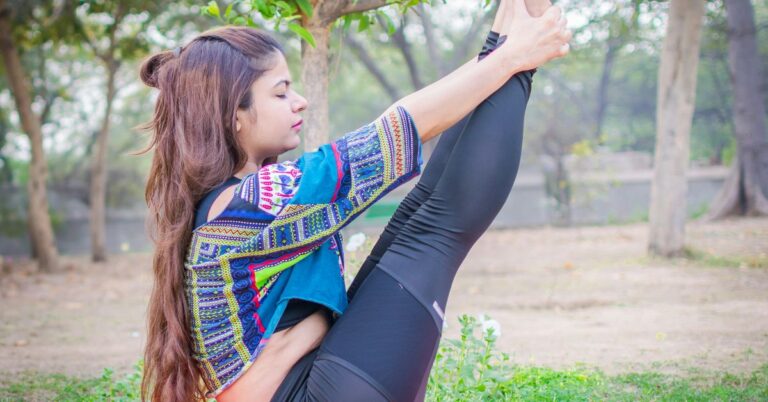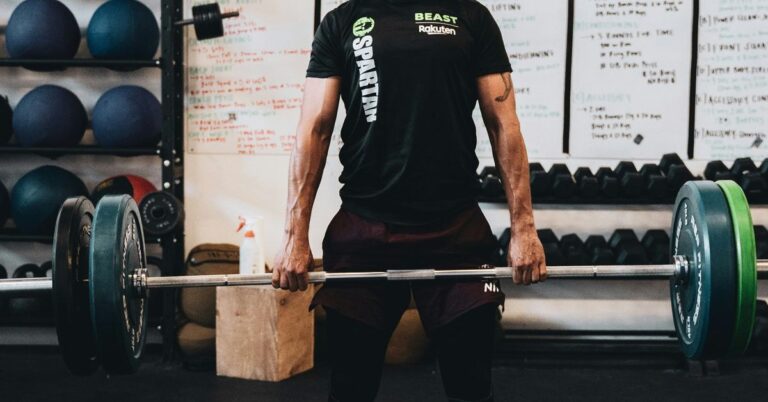Elevate Your Game with These Innovative Training Techniques
Every athlete, whether a budding amateur or a seasoned professional, seeks that edge—something that’ll take their performance from good to great. We’ve all been there, haven’t we? You wake up early, hitting the gym or field, but somehow, it feels like you’re just going through the motions. The good news is, with the right training techniques, you can truly elevate your game. So, let’s delve into some innovative strategies that promise not just to improve your skills, but also to inject a bit of excitement into your routine.
The Power of Visualization
Visualization isn’t just for athletes who meditate in serene settings; it’s a technique that has been embraced by elite competitors across various sports. Picture this: you’re standing at the starting line, your heart pounding, and instead of focusing on the nerves, you close your eyes and visualize every step of your race. You feel the wind against your skin, the ground beneath your feet, and you see yourself crossing the finish line ahead of the competition. This isn’t mere daydreaming; it’s a scientifically backed method that can enhance your performance.
Studies suggest that engaging in mental imagery can significantly improve motor skills and overall performance. In fact, a significant number of athletes report that visualization helps them achieve greater focus and confidence. The brain doesn’t know the difference between a real experience and one vividly imagined. This technique can be particularly beneficial during the off-season when you may not be physically training as intensely, yet your mind is still in the game.
One expert in this field, Dr. Jim Taylor, a renowned sports psychologist, emphasizes the importance of creating detailed mental images. “The more vivid and realistic your visualization, the more effective it will be,” he says. So, next time you’re stuck in traffic or waiting for the bus, take a moment to visualize your upcoming competition—trust me, it’s a game-changer.
Functional Movement Training
Gone are the days when athletes focused solely on isolated muscle training. Functional movement training is all the rage now, and for good reason. This approach emphasizes exercises that mimic everyday activities and movements specific to your sport, promoting strength and flexibility in a more practical manner. Think about it—when was the last time you ran in a straight line without having to dodge, jump, or twist? Exactly.
Incorporating exercises like kettlebell swings, medicine ball throws, or agility ladder drills can dramatically improve your overall athletic performance. These exercises not only build strength but also enhance coordination and balance. As an added bonus, they’re often more enjoyable than traditional weightlifting. I recall a time during my own training when I discovered a love for agility drills—who knew sprinting sideways could feel so liberating?
Perhaps you could start with a simple circuit that includes:
- Kettlebell swings
- Box jumps
- TRX rows
- Medicine ball slams
- Agility ladder drills
Mix and match to keep things fresh, and don’t be surprised if you find yourself looking forward to these workouts more than you did to your old routine.
Embrace Technology: Wearable Devices
Ah, technology! It’s not just for gaming and binge-watching your favorite shows. Wearable devices have revolutionized training, providing athletes with real-time data on their performance. Whether it’s a smartwatch tracking your heart rate or a fitness tracker counting your steps, these gadgets can offer invaluable insights into your training regimen.
For instance, many athletes are now using heart rate monitors to gauge their effort during workouts. This can help you avoid the dreaded burnout while ensuring you’re pushing yourself enough to improve. I remember when I first strapped on a heart rate monitor—I thought I’d be a superhero on the track. Spoiler alert: I was more of a tortoise than a hare. However, it taught me the importance of pacing and recovery.
Moreover, apps that analyze your running form or cycling efficiency can provide feedback that was previously only available to elite athletes with personal coaches. Knowing your metrics—the number of strides per minute, your cadence, or even how much time you spend in various heart rate zones—can help tailor your training program to suit your personal needs.
Cross-Training: Variety is the Spice of Life
Variety in training is not just about keeping things interesting; it’s also crucial for preventing injury and ensuring well-rounded athletic development. Cross-training allows you to work different muscle groups and improve your overall fitness without the repetitive strain that can come from focusing solely on one sport.
For example, if you’re a runner, incorporating swimming or cycling into your routine can help build endurance while giving your joints a break. I’ve personally experienced the joys of cross-training—there was a time when my run was interrupted by a particularly spirited game of ultimate frisbee, and I found myself running faster than I ever thought possible. Who knew dodging a disc could spark such joy?
Here’s a quick rundown of how you can incorporate cross-training into your regimen:
- If you’re a runner, try swimming or cycling.
- If you’re a weightlifter, consider yoga or Pilates for flexibility.
- If you play team sports, mix in some track workouts to improve speed.
- Don’t forget about recreational activities like rock climbing or dance classes!
Each of these alternatives not only enhances your fitness but can also reinvigorate your love for movement.
Mindfulness and Recovery
In the hustle and bustle of training, it’s easy to overlook the importance of recovery. Athletes often push through fatigue, believing that more is always better. However, the truth is that effective recovery is just as crucial as the training itself. Enter mindfulness practices, which have gained traction in recent years for their role in promoting recovery and mental clarity.
Mindfulness techniques—like meditation, deep breathing, or even simple stretching—can help manage stress and improve focus. It struck me that many athletes overlook this aspect; they’re so focused on pushing their limits that they forget to check in with their mental state. I recall a particularly intense training cycle where I barely took time to breathe, only to find myself feeling burnt out and uninspired. Adding just ten minutes of meditation each day turned things around completely.
Consider integrating mindfulness into your routine with practices such as:
- Guided meditation apps
- Breathe work sessions
- Gentle yoga to promote relaxation
- Journaling to reflect on training progress and goals
Taking the time to recharge your mental batteries can lead to clearer thoughts and improved performance in your sport.
Nutrition: Fueling Your Body Wisely
It’s often said that you can’t out-train a bad diet. While it may sound cliché, there’s a lot of truth in it. Nutrition plays a pivotal role in athletic performance, and it’s time to pay attention to what you’re putting into your body. No, I’m not talking about counting every calorie—as tempting as that may be. Instead, focus on fueling your body with the right nutrients to support your training.
Consider adopting a balanced diet rich in whole foods, lean proteins, healthy fats, and plenty of fruits and vegetables. I remember my college days, fueled by instant ramen and questionable takeout. It’s astonishing how much better I felt when I started prioritizing wholesome meals over convenience. You don’t need to be a gourmet chef; even simple things, like prepping meals for the week or keeping healthy snacks on hand, can make a big difference.
Some key points to consider:
- Hydration is essential—don’t wait until you feel thirsty to drink water.
- Prioritize protein intake to support muscle recovery.
- Incorporate healthy fats for sustained energy.
- Timing your meals around workouts can help optimize performance.
And let’s not forget the power of good old-fashioned snacks—bananas, nuts, or energy bars can be your best friends during long training sessions.
Incorporate Speed Work
If you’re looking to boost your performance, speed work should be a staple in your training arsenal. This type of training focuses on improving your pace and overall speed, which can be beneficial for athletes in virtually any sport. Speed work can take many forms, from sprint intervals to hill workouts, and it’s a fantastic way to break up the monotony of regular training.
Some of my most memorable training sessions were the ones where I embraced speed work. I still remember the thrill of sprinting up a hill, gasping for breath but feeling that exhilarating rush of pushing my limits. It’s not just about going fast; it’s about training your body to react quickly and efficiently, which can translate into better performance during competitions.
Here’s how to incorporate speed work into your routine:
- Sprint intervals: Alternate between short bursts of all-out effort followed by recovery periods.
- Fartlek training: Incorporate periods of fast running interspersed with slow recovery jogs.
- Hill sprints: Find a hill and sprint up it, then walk or jog back down to recover.
Whatever method you choose, be sure to listen to your body and avoid overtraining—injuries can derail your progress faster than you can say “speed work.”
Engage with a Community
Lastly, let’s talk about one of the greatest motivators known to athletes: community. Training alone is all well and good, but nothing beats the camaraderie and support of a team or training group. Joining a local club or finding a training partner can keep you accountable and make your workouts more enjoyable.
I can’t count the number of times I’ve left a session feeling invigorated after sharing laughs, struggles, and triumphs with fellow athletes. Whether it’s a running club, a cycling group, or even an online community, engaging with others who share your passion can provide invaluable support and motivation.
Consider these options:
- Join a local sports team or club.
- Participate in group classes at your gym.
- Connect with fellow athletes on social media platforms.
- Join an online forum focused on your sport.
When you surround yourself with like-minded individuals, you’re more likely to stay committed to your training and push yourself to new heights.
Final Thoughts
Elevating your game is a journey, not a destination. By embracing these innovative training techniques, you can break free from the monotony of traditional workouts and discover new avenues for growth. Remember, it’s about finding what works best for you and keeping things fresh. While the road may be challenging, the rewards—improved performance, increased confidence, and a greater love for your sport—are well worth the effort.
So, lace up your shoes, grab your gear, and get ready to embark on this exciting adventure. After all, as the saying goes, “It’s not whether you win or lose, but how you play the game.” And with these innovative training techniques, you’ll be playing at a whole new level.













